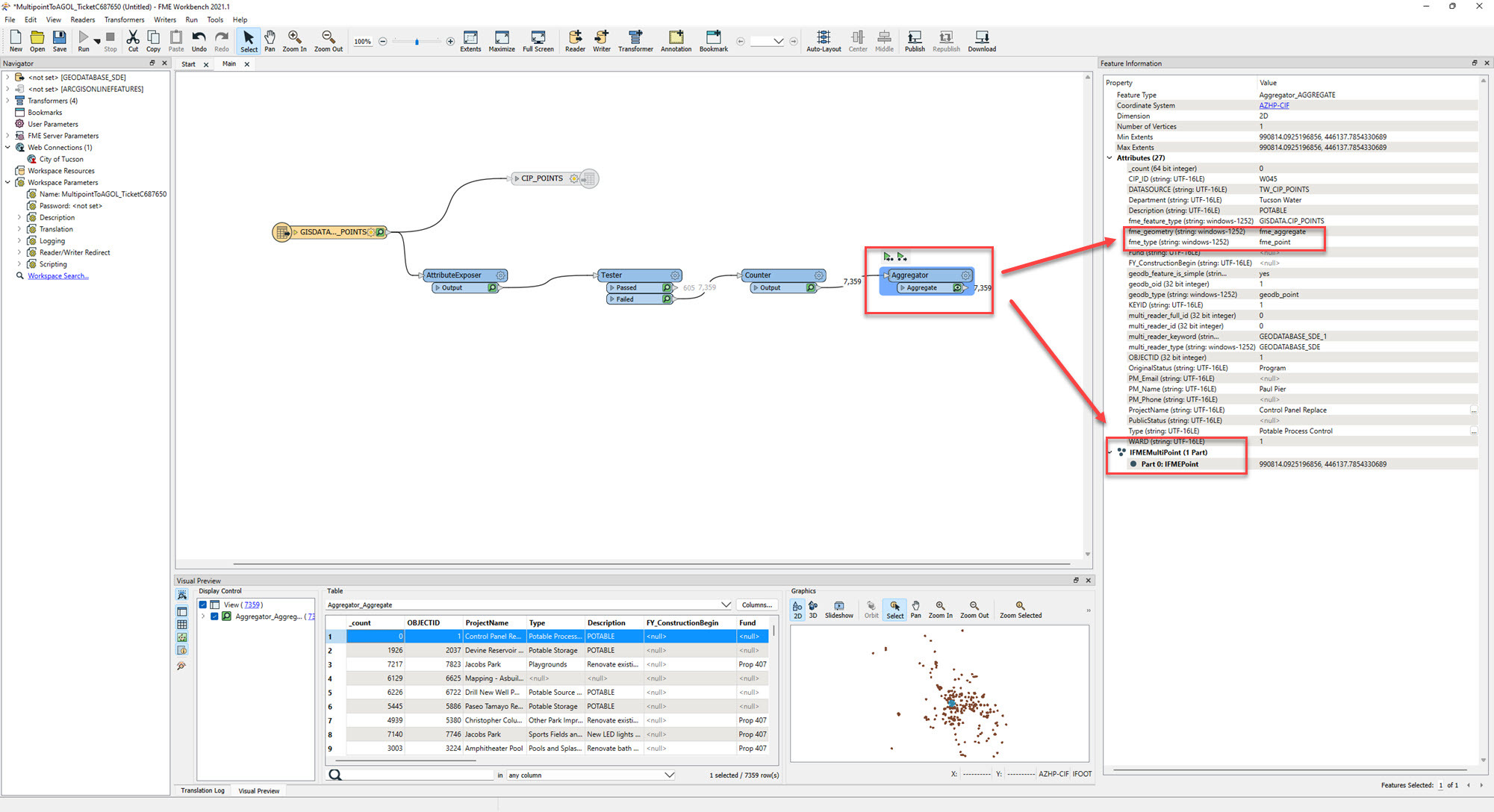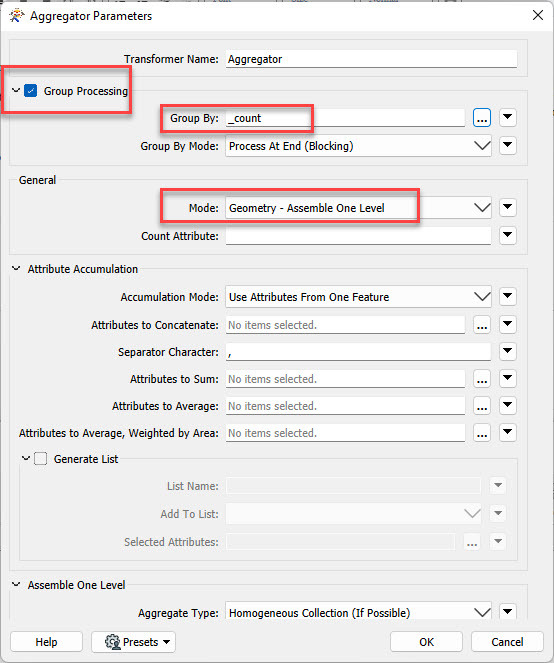Hello!
FME Novice here, running Workbench 2021.1.3.1
I'm trying to update a multipoint feature class in AGOL using FME, but am receiving the following error:
<class 'fmeobjects.FMEPoint'> cannot be converted to esriGeometryMultipointI tried using Aggregator to ensure the points are multipoint but receive this error when I try this method:
0.0|ERROR |<class 'fmeobjects.FMEAggregate'> cannot be converted to esriGeometryMultipoint
0.0|ERROR |ARCGISONLINEFEATURES writer: A fatal error has occurred. Check the logfile above for details
Can FME handle multipoint updates for ArcGIS Online? It has no problem with polylines, so I was hopeful on multipoints.
Any advice is welcome and appreciated. Thank you in advance!
Best answer by cait.boyer
View original







